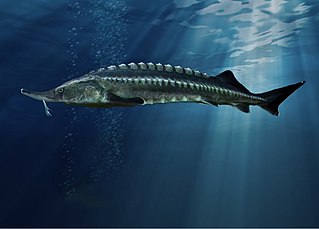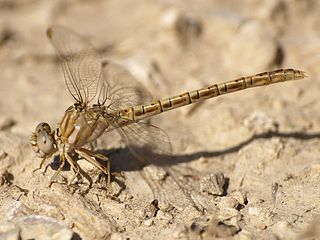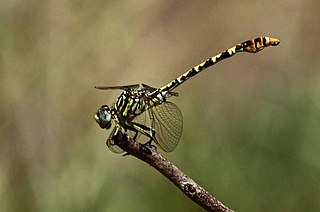
The Endangered Species Act of 1973 is the primary law in the United States for protecting imperiled species. Designed to protect critically imperiled species from extinction as a "consequence of economic growth and development untempered by adequate concern and conservation", the ESA was signed into law by President Richard Nixon on December 28, 1973. The U.S. Supreme Court called it “the most comprehensive legislation for the preservation of endangered species enacted by any nation". The purposes of the ESA are two-fold: to prevent extinction and to recover species to the point where the law's protections are not needed. It therefore “protect[s] species and the ecosystems upon which they depend" through different mechanisms. For example, section 4 requires the agencies overseeing the Act to designate imperiled species as threatened or endangered. Section 9 prohibits unlawful ‘take,’ of such species, which means to “harass, harm, hunt...” Section 7 directs federal agencies to use their authorities to help conserve listed species. The Act also serves as the enacting legislation to carry out the provisions outlined in The Convention on International Trade in Endangered Species of Wild Fauna and Flora (CITES). The Supreme Court found that "the plain intent of Congress in enacting" the ESA "was to halt and reverse the trend toward species extinction, whatever the cost." The Act is administered by two federal agencies, the United States Fish and Wildlife Service (FWS) and the National Marine Fisheries Service (NMFS). FWS and NMFS have been delegated the authority to promulgate rules in the Code of Federal Regulations to implement the provisions of the Act.

The conservation status of a group of organisms indicates whether the group still exists and how likely the group is to become extinct in the near future. Many factors are taken into account when assessing conservation status: not simply the number of individuals remaining, but the overall increase or decrease in the population over time, breeding success rates, and known threats. Various systems of conservation status exist and are in use at international, multi-country, national and local levels as well as for consumer use.

An IUCN Red List Critically Endangered (CR) species is one that has been categorized by the International Union for Conservation of Nature as facing an extremely high risk of extinction in the wild. As of 2020, there are 6,811 species that are considered to be Critically Endangered. This is out of the 120,372 species currently tracked by the IUCN.

Onychogomphus assimilis is a species of dragonfly in the family Gomphidae. It is found in Armenia, Georgia, Iran, Turkey, and Turkmenistan. Its natural habitat is rivers. It is threatened by habitat loss.

Onychogomphus is a genus of dragonflies in the family Gomphidae. They are commonly known as Pincertails.

Onychogomphus costae is a species of dragonfly in the family Gomphidae. It is found in Algeria, Morocco, Portugal, Spain, and Tunisia. Its natural habitat is rivers. It is threatened by habitat loss.
Onychogomphus kitchingmani is a species of dragonfly in the family Gomphidae. It is endemic to Zambia. Its natural habitat is rivers.
Onychogomphus macrodon is a species of dragonfly in the family Gomphidae. It is found in Israel, Jordan, Lebanon, Syria, and Turkey. Its natural habitat is rivers. It is threatened by habitat loss.
Onychogomphus pilosus is a species of dragonfly in the family Gomphidae. It is found in Ethiopia, Kenya, and Tanzania.
Onychogomphus styx is a species of dragonfly in the family Gomphidae. It is found in Kenya, Tanzania, Uganda, Zambia, and possibly Guinea. Its natural habitats are subtropical or tropical moist lowland forests and rivers. It is threatened by habitat loss.

Onychogomphus supinus is a species of dragonfly in the family Gomphidae. English names include lined claspertail and gorge claspertail.

The Yusufeli Dam is an arch dam under construction on the Çoruh River near Yusufeli in Artvin Province within the eastern Black Sea region of Turkey. The Yusufeli Dam will be the second largest dam within the larger Çoruh River Development Plan, which plans to build 13 dams, of which two are operational and another two are under construction. The dam's main purpose is hydroelectric power production and it will support a 540 MW power station. The dam is controversial because of its projected impact on the biodiversity within its reservoir area along with the relocation of locals.

A vulnerable species is a species which has been categorized by the International Union for Conservation of Nature as likely to become endangered unless the circumstances that are threatening its survival and reproduction improve.

Onychogomphus forcipatus, the small pincertail or green-eyed hook-tailed dragonfly, is a species of dragonflies belonging to the family Gomphidae.

Melligomphus acinaces is a species of dragonfly in the family Gomphidae. It is endemic to the streams of Western Ghats of India. This species was originally described as a Onychogomphus. However, both the pattern and the shape of the anal appendages do not fit Onychogomphus but are very close to those of the species placed in Melligomphus.

Lamelligomphus nilgiriensis is a species of dragonfly in the family Gomphidae. It is endemic to the hill streams of Western Ghats of India. This species has been placed by many authors in Onychogomphus but should be included in Lamelligomphus following Fraser (1934), based on the shape of the male anal appendages.
Onychogomphus malabarensis is a species of dragonfly in the family Gomphidae. It is endemic to the streams of Western Ghats of India.

Nychogomphus striatus is a species of dragonfly in the family Gomphidae. It is endemic to the streams of Western Ghats of India. Reports from Nepal require further studies.
This page is based on this
Wikipedia article Text is available under the
CC BY-SA 4.0 license; additional terms may apply.
Images, videos and audio are available under their respective licenses.













